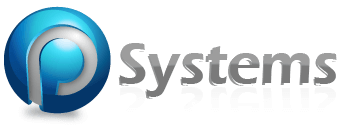
⏵Key Features and Functionality of Educational Student Information Software:
1. Student Records Management:
Centralized storage of student information, including personal details, emergency contacts, and demographic data.
Ability to track and manage student enrollment, transfers, and withdrawals.
Storage and retrieval of historical student records, such as academic transcripts and disciplinary records.
2. Attendance Tracking:
Easy recording and tracking of student attendance, whether through manual entry, barcode scanning, or biometric systems.
Automated alerts and notifications for teachers and parents regarding absences or tardiness.
Generation of attendance reports for analysis and compliance purposes.
3. Grade Management:
Recording and calculation of student grades for individual assignments, tests, and exams.
Ability to weight grades and calculate overall averages.
Generation of report cards and progress reports based on grades.
4. Course and Class Management:
Creation and management of course catalogs, including course descriptions, prerequisites, and availability.
Assignment of teachers to specific classes and management of teacher schedules.
Timetabling and scheduling of classes, avoiding conflicts and optimizing resource allocation.
5. Communication and Collaboration:
Secure messaging platforms for teachers, students, and parents to facilitate effective communication.
Online discussion forums or collaboration spaces for students and teachers to interact and share resources.
Parent portals or dashboards for accessing student information, grades, attendance, and important updates.
6. Assessments and Assignments:
Creation and management of assessments, exams, and assignments.
Online submission and grading of assignments.
Integration with plagiarism detection tools for academic integrity.
7. Reporting and Analytics:
Generation of comprehensive reports on student performance, attendance, and disciplinary incidents.
Analytics capabilities to analyze trends, identify patterns, and make data-driven decisions.
Customizable dashboards and visualizations for easy data interpretation.
8. Data Security and Privacy:
Robust data security measures to ensure the confidentiality and integrity of student information.
Compliance with data protection regulations, such as GDPR or FERPA.
User access controls and permission settings to protect sensitive data.
9. Integration with Other Systems:
Seamless integration with other educational tools and systems, such as learning management systems (LMS) or gradebooks.
Data exchange with external platforms, such as assessment systems or library management systems.
10. Mobile Accessibility:
Access to student information and functionality through mobile applications, ensuring convenient access for teachers, students, and parents on the go.
These are some of the key features and functionality commonly found in educational student information software. However, it’s important to note that the specific features may vary depending on the software provider and the needs of the educational institution.
⏵Detailed Data Management and Reporting Features for Educational Student Information Software:
⏵Data Management:
1. Centralized Student Database:
A centralized database to store and manage student information, including personal details, contact information, enrollment history, and demographic data.
Ability to update and maintain accurate student records throughout their educational journey.
2. Data Integration and Import:
Capability to import data from various sources, such as enrollment forms, transfer records, or previous systems, ensuring seamless data integration.
Integration with other educational systems, such as learning management systems (LMS) or assessment platforms, for efficient data exchange.
3. Customizable Data Fields:
Flexibility to define custom data fields to capture additional information specific to the educational institution’s needs.
Configurable data entry forms to accommodate unique requirements or additional data elements.
4. Document Management:
Storage and management of digital documents associated with students, including medical records, consent forms, or academic transcripts.
Secure document uploads and version control to maintain a comprehensive record of student-related documents.
5. Data Security and Privacy:
Implementation of robust security measures to protect student data from unauthorized access or breaches.
Compliance with data protection regulations, such as GDPR or FERPA, to ensure student privacy and confidentiality.
⏵Reporting and Analytics:
1. Standard Reports:
Predefined reports that cover common educational metrics, such as attendance reports, grade reports, or discipline reports.
Availability of reports for compliance purposes or to meet statutory reporting requirements.
2. Customizable Reports:
Ability to create custom reports by selecting specific data elements, filtering criteria, and report formats.
Customizable report templates to match the unique reporting needs of the educational institution.
3. Dashboards and Visualizations:
Interactive dashboards with visual representations of key educational metrics and performance indicators.
Graphs, charts, or tables to present data in an easily digestible format for quick analysis and decision-making.
4. Data Analysis and Trends:
Analytical capabilities to identify trends, patterns, and correlations within student data.
Tools for data mining, data segmentation, and statistical analysis to gain insights into student performance and behavior.
5. Student Progress Tracking:
Tracking of student progress over time, including academic achievements, attendance trends, or disciplinary incidents.
Historical data comparisons to assess student growth and evaluate the effectiveness of interventions or educational programs.
6. Export and Data Sharing:
Ability to export reports or data in various formats, such as PDF, Excel, or CSV, for further analysis or sharing with stakeholders.
Integration with communication tools to easily share reports or data insights with teachers, parents, or administrators.
These data management and reporting features empower educational institutions to effectively organize, analyze, and report on student data, facilitating informed decision-making and supporting data-driven educational strategies.




